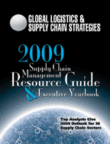
Visit Our Sponsors |
|
|
|
|
|
|
|
|
|
|
|
|
|
|
|
|
|
|
|
|
|
|
|
|
|
|
|
|
|
|
|
|
|
|
|
|
|
|
|
|
|
|
|
|
|
|
|
|
|
|
|
|
|
|
|
|
|
|
|

Before business processes can be transformed, the Best-in-Class have demonstrated that a cultural and people-centered transformation often makes the difference between good results and great results-or even between wild success and dramatic failure.
Recent Aberdeen research on sustainability initiatives has revealed that top performers place the transformation of enterprise culture at the center of their sustainability and corporate responsibility platforms. For example, results from studies of supply chain and retail sector initiatives have demonstrated that sustainability is as much about change in organizational culture as it is about process transformation. Accordingly, vision, leadership, education and communication are as important as changes in operational processes and technology. In two studies performed in 2008, Building a Green Supply Chain, from March, and Getting from Green to Gold, done in July, culture was found to be the linchpin to sustainability success.
Best-in-Class organizations are differentiated from their Average and Laggard peers by a greater commitment to a holistic and coordinated vision, driven by an executive champion, and supported by a culture of robust education, communication, and data sharing.
While the Best-in-Class significantly outperformed their Average and Laggard peers in both studies, the retail Best-in-Class significantly distinguish themselves from the supply chain Best-in-Class in the following ways:
• 56 percent of the retail Best-in-Class have had their initiatives in place for 6+ years-31percent of which have had their initiatives in place for more than 10 years
• 13 percent of the supply chain Best-in-Class have had their initiatives for 6+ years-of which only 9 percent have had an initiative for more than 10 years
• 72 percent of the supply chain Best-in-Class communicate performance to internal stakeholders, quarterly-88 percent of the retail Best-in-Class communicate to their internal stakeholders, monthly
• 72 percent of the supply chain Best-in-Class communicate their sustainability progress to their external stakeholders, yearly -84 percent of the retail Best-in-Class communicate progress to their external stakeholders, quarterly
The retail Best-in-Class are more closely engaged with their stakeholders and are more aggressively communicating their vision and progress around their sustainability and CR goals. Best-in-Class retailers are 19 percent more likely to engage in educating their internal stakeholders than are the best performing supply chain respondents-these are major organizational differences that deeply impact the culture and success of CR initiatives which are based upon shared visions and goals.
Study results further showed a major difference between Best-in-Class adoption levels of key technological enablers. While 19 percent of supply chain top performers utilize role-based dashboards calibrated to sustainability goals and performance, a full 44 percent of top performing, sustainability-engaged retailers have adopted this method of data and performance tracking and sharing. Though leveraged by education and communication, effective CR performance depends on an array of complex, quantitative and qualitative data delivered to and acted upon by an individual or team, in the appropriate job role. Role-based sustainability dashboards facilitate the structured sharing and understanding of enterprise goals, at multiple levels.
The Outlook
Top performing organizations leverage the power of collaboration, communication, education, and leadership with both internal and external stakeholders. The depth and dynamism of needed process changes must be supported by deep and dynamic changes in enterprise culture.
RELATED CONTENT
RELATED VIDEOS
Timely, incisive articles delivered directly to your inbox.


